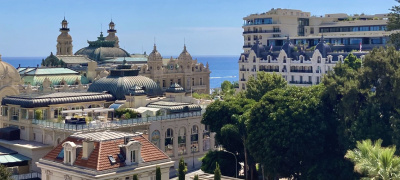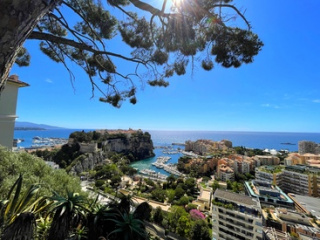France - Monaco
- 17 boulevard de Suisse
- 98000 MONTE-CARLO, Monaco
- +377 - 97 70 35 15

Monte-Carlo (Monaco)

Monaco - its region and its real estate market
Monaco, or better: the Principality of Monaco (is a small sovereign city-state located in South Western Europe on the northern central coast of the Mediterranean Sea. It is surrounded on three sides by its neighbour, France, and its centre is about 16 km (9.9 mi) from Italy. Its area is 2.02 km2 (0.78 sq mi) with an estimated population of approx. 35,000. Monaco is the name of the country and its capital (and only) city. It is famous for its advantageous tax regime and active society life, wealthy foreigners making up the large majority (approx. 84 %) of the population. Monaco is a constitutional monarchy and principality, with H.S.H. Prince Albert II as the current head of state.
Following a land grant from Emperor Henry VI in 1191, Monaco was re-founded in 1215 as a colony of Genoa. Monaco has been ruled by the House of Grimaldi since 1297, when Francesco Grimaldi ("Il Malizia", translated from Italian either as"The Cunning One") and his men captured the fortress protecting the Rock of Monaco dressed as a Franciscan monk - a "Monaco" in Italian, although this is a coincidence as the area was already known by this name. Tumultous centuries followed. In 1793, French Revolutionary forces captured Monaco, and it remained under French control until 1814. The principality was re-established that year, only to be designated a protectorate of the Kingdom of Sardinia by the Congress of Vienna in 1815. Monaco remained in this position until 1860, when by the Treaty of Turin, Sardinia ceded to France the surrounding county of Nice (as well as Savoy). During this time there was unrest in the towns of Menton and Roquebrune, which declared independence, hoping for annexation by Sardinia. The unrest continued until the ruling prince gave up his claim to the two towns (some 95% of the country), and they were ceded to France in return for four million francs. This transfer and Monaco's sovereignty was recognised by the Franco-Monegasque Treaty of 1861.
At the time of the the Franco-Monegasque Treaty, many small towns in Europe enjoyed the prosperity by transforming themselves into mineral springs resorts with gambling establishments. The best known resorts were German towns of Baden-Baden, Wiesbaden and Homburg. Prince Charles III, in dire straits due to the recent land loss, was impressed by their successes and decided to turn Monaco's fate by turning it into such a fashionable “watering-place”. In 1856 Charles III gave a concession to Napoleon Langlois and Albert Aubert to establish a sea-bathing facility for the treatment of various diseases and build a German style casino. The casino was opened in the part of Monaco called La Condamine. In the following years it was moved from one building to another and finally ended up in the area called “les Spelugues” (The Caves).
However, the new resort in Monaco was initially not a success. This changed with arrival of one man in the Principality: François Blanc. Under his leadership, the German town of Bad Homborg with its casino had become the most popular gambling resort in Europe. When Blanc heard that Monaco’s casino was going through a crisis, he arrived to Principality and made an offer of 1,700,000 francs to Prince Charles III for a lease of the casino. On March 31, 1863, the Prince approved the transaction, and the following day Blanc registered in Paris a company “La Societe anonyme des Baines de Mer et du Cercle des Etrangers a Monaco” with a capital of 8 million francs.
Blanc’s German experience as a successful casino operator made him the perfect man for the job. Major changes were initiated at once: The casino was lavishly decorated, new hotels and villas were built, work began on a railway connecting Monaco with other coastal cities. Blanc also insisted that the place where the casino was located – Les Spelugues – be renamed to avoid unpleasant assosciations in other languages. After some thought, Prince Charles agreed to commemorate his name and call the place “Monte Carlo” – “Mount Charles”.
The new railway opened in 1868 and the flow of visitors increased overnight. The profits from casino grew to such an extent that the Prince was able to abolish all taxation for Monaco’s citizens. Over the next decades, Monaco developed into Europe's most glamrous resort attracting high society from all over. The number of the hotels in the Principality grew from 2 to 48, and in 1900 there were no less than 85 wine merchants in the Principality. After the death of François Blanc, his widow, Marie, took the reigns and pushed Monte - Carlo's development even further: The Opera house by Garnier and the famous Oceanographic Museum were established.
The Monaco real estate brokerage of Sotheby's International Realty ® is located in a prime position in the very center of Monte - Carlo, its famous "Golden Triangle". The Monaco property agency is specialised on the sale of carefully selected Monaco properties in all price ranges, from charming pied-à-terres to generous apartments, from luxury villas to historic mansions. The Sotheby's International Realty ® Monaco brokerage covers the most important markets in the entire Principality, such as Monte - Carlo, Larvotto, Monaco - Ville, Fontvieille and Jardin Exotique, Our highly professional Monaco property agents offer their distinguished clients a full range of Monaco real estate services which include not only property search and property sales, but also valuations, legal, financial, administrative and practical advice.
Find your Sotheby's International Realty agency
- Aix-en-Provence
- Ajaccio
- Alpe d'Huez
- Annecy
- Argentière
- Arles
- Bayeux
- Beaujolais
- Beaulieu-sur-Mer
- Biarritz
- Bouc Bel Air
- Bordeaux
- Cannes
- Cap-Ferret/Pyla
- Chamonix
- Courchevel
- Deauville
- Dinard
- Divonne
- Evian-les-Bains
- Gordes
- La Baule
- La Rochelle / Île de Ré
- Le Touquet
- Lille
- Lyon
- Marseille
- Mazan
- Megève
- Méribel
- Monte-Carlo
- Montpellier
- Nantes
- Narbonne
- Neuilly-sur-Seine
- Nice
- Orléans
- Paris
- Pays d'Auge
- Perpignan
- Porto-Vecchio / Bonifacio
- Quimper
- Rouen
- Saint-Jean-Cap-Ferrat
- Saint-Jean-de-Luz
- Saint-Rémy de Provence
- Saint-Tropez
- Tignes
- Tresserve
- Toulouse




